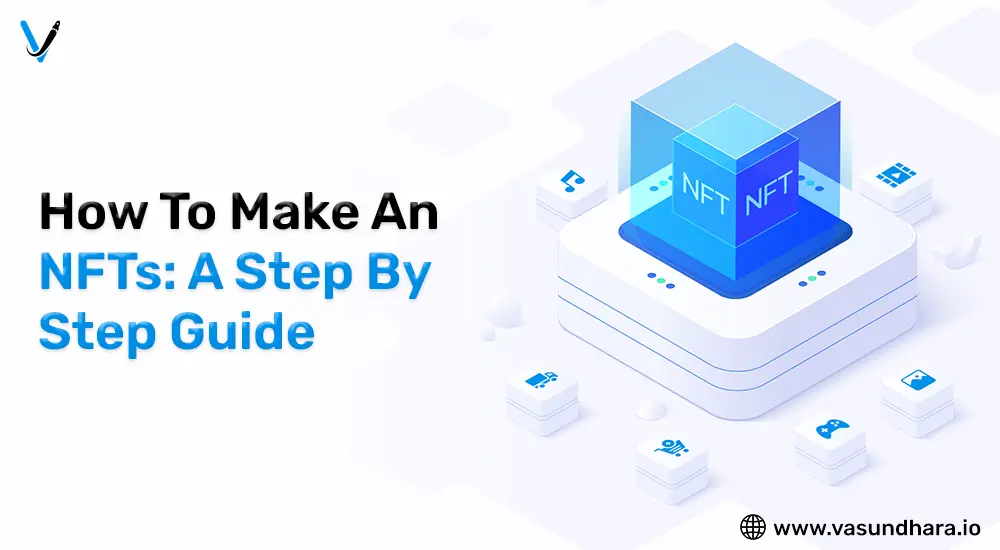What is NFT?: Examples And Key Points To Know


- May 31, 2022




Non-Fungible Tokens (NFTs) are currently taking the world of digital art by storm. The massive sales of new cryptocurrencies are transforming the livelihood of digital artists. Not only artists but well-known celebrities are also joining this platform as a fresh way to engage with their audience.
Everyone believed Bitcoin was the digital answer to currency. Similarly, NFTs have arrived as the digital answer to artwork and collectibles. It is in the tokenized form to represent the ownership of unique digital artwork.
Non-fungible tokens are referred to as NFTs. A cryptographic token for unique digital assets and works on a blockchain network.
They represent real-world objects (art, music, in-game items, and videos) that cannot be replaced or exchanged with one another because NFTs have unique identifying codes. Although anyone can replicate an image, the original file remains secured.
The first NFT project, Etheria was unveiled and approved in October 2015. But it gained popularity and curiosity among users in 2021.

NFT represents internet collectibles (like art, music, and games) with an authentic certificate from blockchain technology.
NFTs are stored on the Blockchain network. Hence, you can have ownership of the digital assets on multiple platforms. Artists can generate as many assets as they like, and have the power to limit the number of NFTs for scarcity.
NFTs have a unique property that cannot be forged or otherwise manipulated. And the metadata of each NFT is an unalterable record that gives the certificate of authenticity.
The original creators of NFT control the private key of their account where the NFT lives, and they are free to transfer that to any account.
Buyers can trust and verify the authenticity of a particular NFT because public ledgers are decentralized and immutable where records of token issuance, transfer, and activity can be publicly verified.
NFTs can be purchased or sold across various DLTs (distributed ledger technologies) using a decentralized platform.
NFTs exchange takes place with cryptocurrencies such as Bitcoin on specialist sites.
A lot of innovations are happening on the NFT platform that will inspire you to create your own. You can get a better idea by having some examples:
“The Merge” world's most expensive NFT artwork by digital creator Pak.
"Everydays: The First 5000 Days" represents his daily creations spanning more than thirteen years.
“HUMAN ONE” represents 'a portrait of a human born in the metaverse'.
“CryptoPunk #5822” has been sold for a record-breaking 8000 ETH and purchased by Deepak Thapliyal, the CEO of a blockchain.
The world's first-ever tweet NFT from a Twitter founder.
“NFT Taco art” is created for users to hold their favorite tacos in their hearts and digital wallets.
The music album NFT was released by Kings of Leon (an American rock band).
NFTs work on blockchain technology. A distributed public ledger that records transactions. And blockchain is the underlying process that makes cryptocurrencies possible.
They are most commonly stored on the Ethereum blockchain, but other blockchains support them as well.
NFTs are created (or minted) from digital objects that represent both tangible (assets are physical) and intangible items (do not exist in physical form). It includes art, GIFs, videos, collectibles, virtual avatars, music, and much more.
Creators can retain ownership rights to their NFTs. And it has unique data that makes it easy to verify their ownership and transfer tokens between owners. They can store specific information inside it as well. For illustration, artists can sign their artwork by including their signature in an NFTs metadata.

It has numerous benefits, including:
Every NFT is an original digital artwork with unique metadata. Any artist or collector can digitize their work and enter into e-commerce by tokenizing their items. It works in both ways, as a regular store or an auction platform. You can get a better understanding by knowing all the categories, which include:
1. Original digital artwork
2. Digital collectibles
3. In-game items
4. Domains
5. Music tracks
6. Videos
7. NFT art app
8. Essay or creative writing
9. Unique pair of shoes
10. Pattern
11. Ticket or coupon
Creating your own NFT is a simple process that does not require extensive knowledge of the crypto industry.
The process of creating NFT is known as “minting”. It refers to the method of turning a digital item into an asset on the blockchain.
Before starting, you have to decide on which blockchain you want to issue your artwork. The development of NFTs have started with the Ethereum blockchain; therefore, a wide range of blockchains for NFTs are available, including:
Each blockchain platform has its own NFT token standard, compatible wallet services, and marketplaces where the token will be listed.
We often get confused between NFTs and cryptocurrencies because they have a lot in common.
But one of the main differences is that cryptocurrencies, by their very nature, are fungible. On the other hand, NFTs are not fungible, as their name suggests. For instance, one Bitcoin is equal to another Bitcoin, but one NFT does not equal another NFT. Each is noticeable, unique, and valued differently depending on its recognized value and demand.
Having a clear understanding of what NFTs are and the significant benefits you will get while using them, you might want to step into buying NFTs. If so, you need to get some essential items for it:
1. You will need to have a digital wallet that allows you to store your NFTs and cryptocurrencies.
2. Then you have to purchase some cryptocurrency (depending on what your NFT provider accepts) most likely Ether. You can buy cryptocurrencies from platforms like OpenSea, Coinbase, Kraken, PayPal, and much more.
3. Once you have completed your cryptocurrency purchase, you can move it from the exchange to your wallet.
Now you wish to sell your digital artwork, but before you step in, you should know the two feasible options for selling NFTs:
1. Fixed-price: It is a sale where users specify a price at which they want to sell the NFT in a transparent and direct way.
2. Auction: There are usually two types of auction: English and Dutch auctions.
An English auction is one with an increasing price where the highest bidder wins at the end. On the other hand, a Dutch auction is one with a decreasing price where the price drops until someone buys an NFT.
Now your wallet is ready, all you need to do is to buy and sell NFT. We have listed here some of the best NFT marketplaces for you. Take a look:

OpenSea- It is one of the oldest and largest NFT platforms. It has one million active users.
Rarible- One of the leading NFT marketplace for investors. It has multi-chain support and a wide range of crypto wallets available.
Crypto.com- The best NFT marketplace that makes it an easy process. It offers no transaction fees when buying NFTs.
NFT Launchpad- It is the fastest-growing NFT platform with exciting collections. It offers NFTs minted on the Binance Smart Chain (BSC) and Polygon blockchains.
Binance- Low-fee NFT trading platform. According to CoinMarketCap, it is the world's largest cryptocurrency exchange platform.
Many industry analysts believe that Non-Fungible Tokens will continue to grow in the coming years. In 2022, new marketplaces for art with the best features will emerge to help artists and investors in different ways. An NFT development company will help you to create unique and valuable artwork for your project.
Copyright © 2026 Vasundhara Infotech. All Rights Reserved.